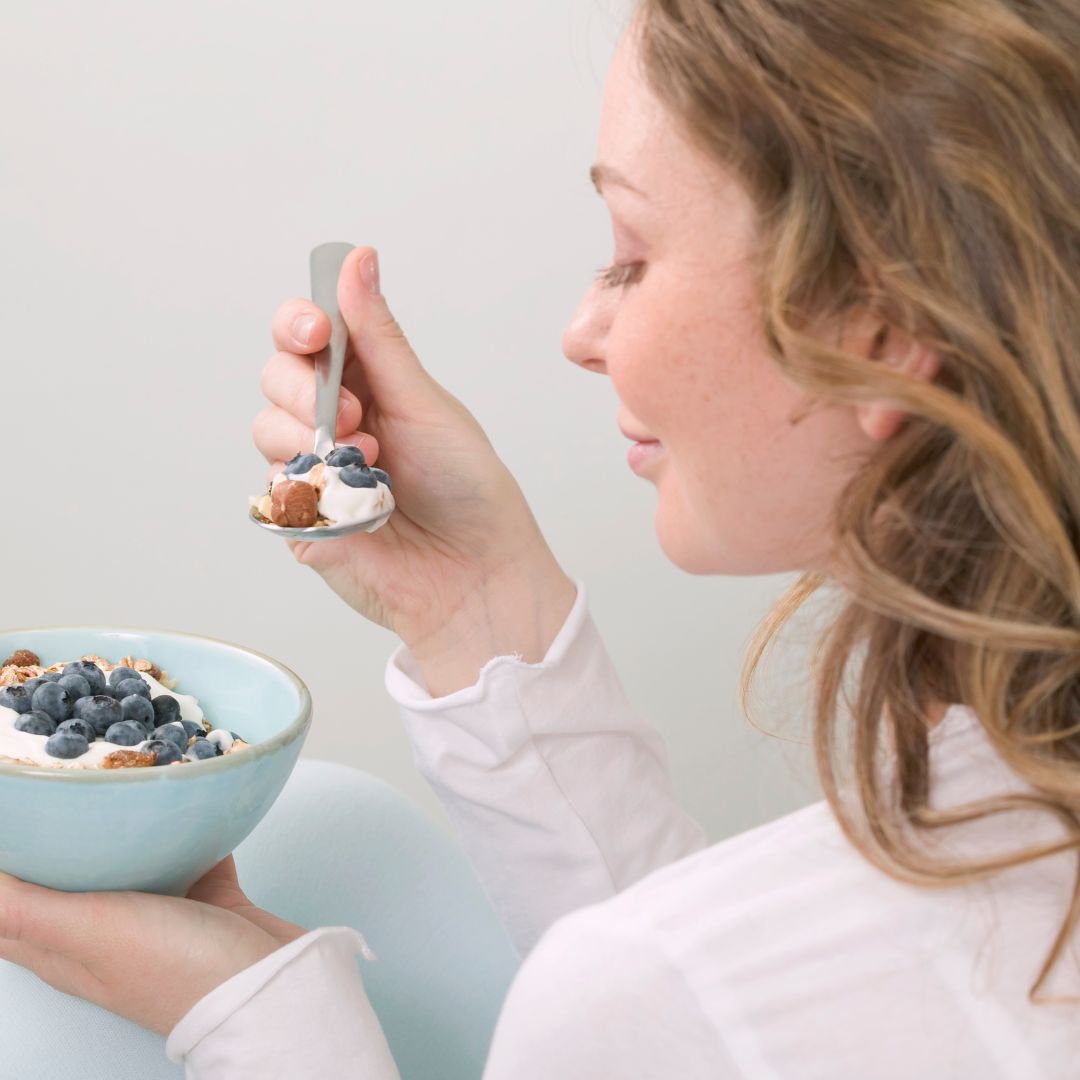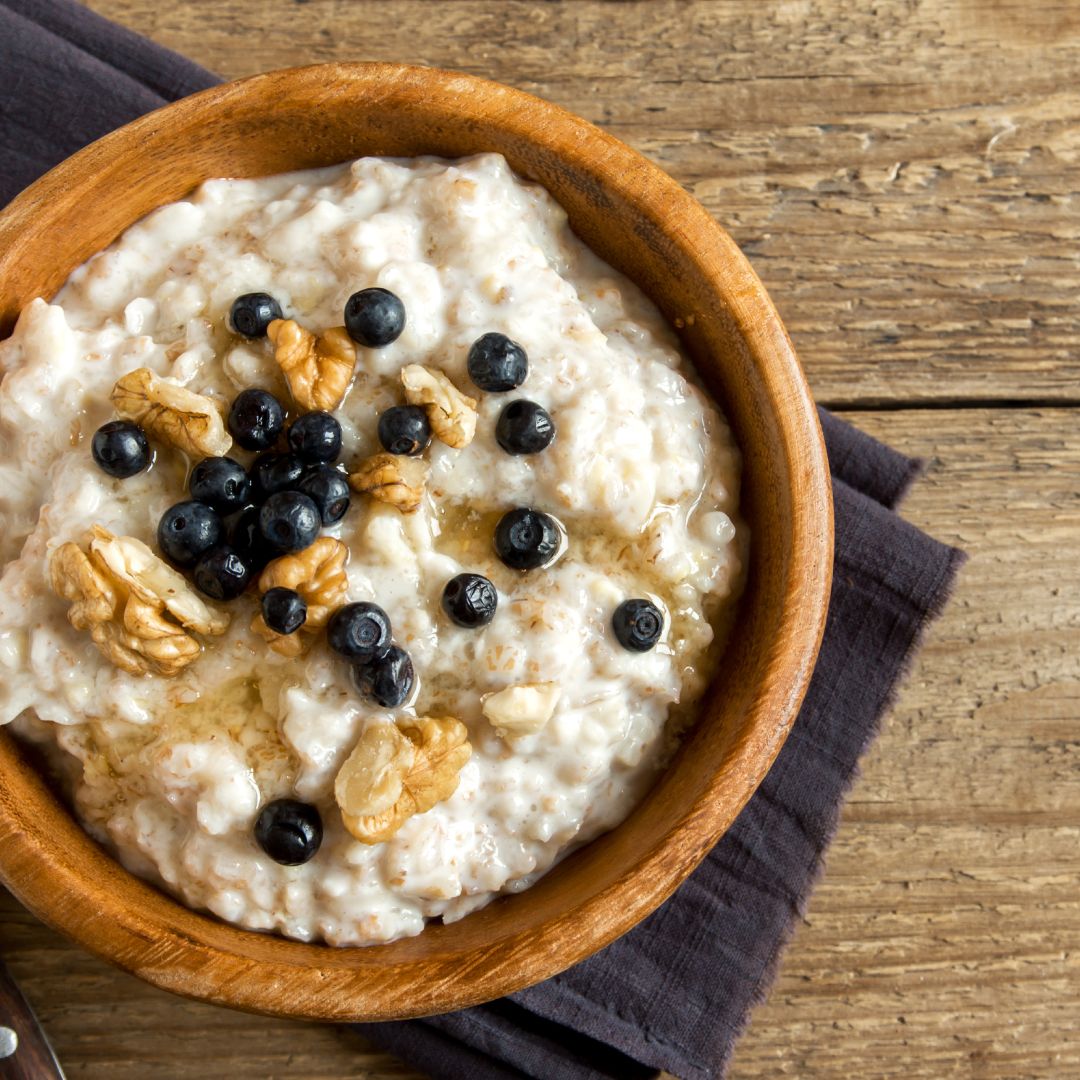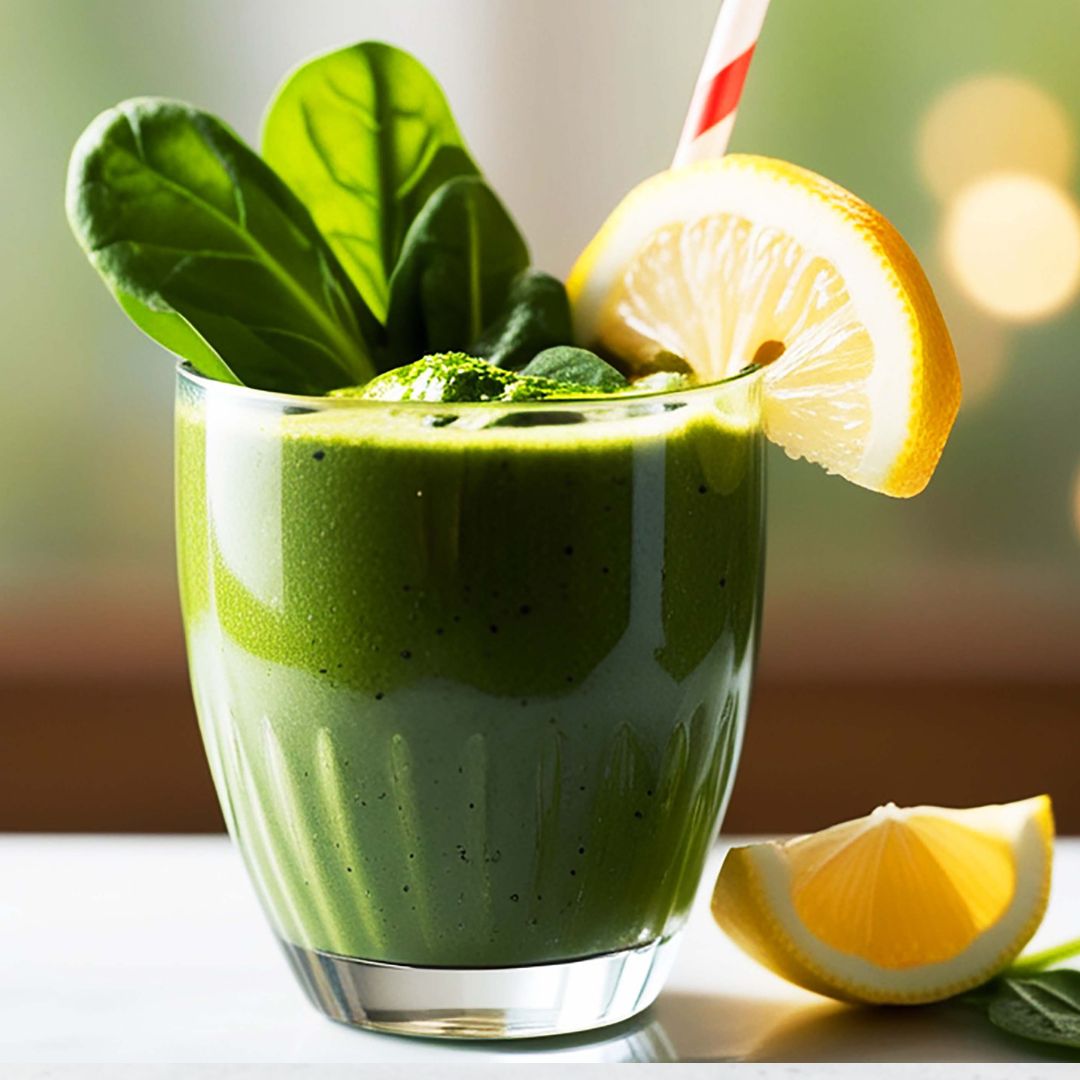
Top Tips 5 Easy Food Swaps for January
January often brings so much pressure to overhaul everything at all once. Many of us feel pulled towards strict plans or quick fixes, especially after a busy – and heavy! - December. But the problem is that those restrictive diets rarely last long, and then often leave us feeling hungry, tired and frustrated.
Gentle food swaps offer a different way forward. They are easy changes that can support better energy, steadier appetite, and a more nourishing routine without cutting out entire food groups. These small changes can help you feel nourished rather than deprived - and they are easy to keep up for the long term.
(Internal link cue: December “Avoiding the December Slump” blog)
Why Gentle Swaps Work Better than Diets
Research shows that nutrition habits that last tend to come from gradual changes rather than all-or-nothing rules. When you focus on adding nourishing foods rather than removing everything you enjoy, your meals feel satisfying and your blood sugar and energy levels often benefit.
Gentle swaps support your metabolism by increasing the amount of fibre, protein or healthy fats in your meals. These nutrients help with satiety, stabilise blood sugar and support digestive health. Over time these small choices add up and create a meaningful shift in how you feel day to day.
They also reduce the sense of pressure that often leads to diet fatigue. By making manageable changes at your own pace, it becomes easier to build confidence and consistency.
5 Practical Food Swaps for Everyday Meals
These swaps are simple, realistic and easy to put into action.
1. Swap toast for a protein-based option such as oatcakes with cottage cheese or eggs with vegetables
This reduces reliance on fast-releasing carbohydrates and increases protein and fibre which help keep blood sugar steadier. Oatcakes, cottage cheese and eggs all offer slow and sustained energy while still feeling satisfying and comforting.
2. Swap sugary breakfast cereals for a protein rich start
Many cereals create a quick rise in blood sugar followed by a mid-morning slump. Choosing Greek yoghurt with nuts and seeds, eggs, if tolerated, or a warm porridge with added protein can keep you energised and satisfied.
3. Swap creamy sauces for yoghurt based or olive oil dressings
Plain yoghurt, tahini and olive oil provide a creamy texture with more protein or healthy fats and usually less added sugar. These options help support balanced meals and provide a gentler release of energy.
4. Swap crisps or biscuits for balanced snacks
If you need a snack, choose options that pair protein and fibre. Examples include hummus with vegetables, nuts with fruit, or Greek yoghurt with berries. These combinations support fullness and reduce cravings without feeling restrictive.
5. Swap processed meats for lean or plant-based proteins
Choosing fish, poultry, tofu, tempeh or beans if tolerated can provide higher quality protein and more fibre or omega 3 fats. These foods support metabolic health and promote a steadier release of energy throughout the day.
Breakfast Upgrade Ideas
If your breakfast is an area that you’d like to refresh, try one of the following:
• Power porridge with chia and flaxseeds, and protein powder
• Greek yoghurt with berries, nuts and seeds
• A vegetable packed omelette or tofu scramble
• Oatcakes topped with nut butter and sliced fruit
Each of these options supports more balanced blood sugar responses which can help reduce mid-morning cravings.
If you want support creating realistic habits that feel good and last beyond January, why not book a free call to see how nutritional therapy could help you feel more energised and confident with your eating.

Power Porridge
A warm bowl of porridge can be a great start to the day, especially when it’s cold and icy outside. Oats are a healthy option, but on their own can spike your blood sugar. But with a few simple tweaks, this breakfast can become a protein-rich, fibre-focused option that helps keep you full all morning. My recipe balances oats with ground flaxseed, chia seeds and a generous portion of protein to reduce the usual glucose spike and support better blood sugar control.
(Internal link cue: November “Steady Energy” blog)
Why Porridge Can Support Blood Sugar
Oats are naturally rich in beta glucan, a type of soluble fibre that slows digestion and supports a more gradual rise in blood glucose. When combined with protein, healthy fats, and additional fibre from seeds, porridge can become a balanced breakfast that supports appetite regulation and steadier energy release.
This version uses a smaller serving of oats and blends them with flaxseed and chia to increase fibre diversity while keeping the overall carbohydrate load moderate. The added protein helps promote satiety and supports blood sugar balance throughout the morning.
Ingredients and Method
Serves 1. Provides approximately 27–30 g protein.
Ingredients
Dry ingredients
• 25 g porridge oats
• 1 tbsp ground flaxseed
• 1 tbsp chia seeds
• 15 g mixed nuts, roughly chopped (almonds, walnuts or hazelnuts)
Protein
Choose one of the following to reach 25–30 g protein:
• 150 g plain Greek yoghurt (2 percent or higher)
or
• 1 scoop vanilla or unflavoured protein powder (whey, pea or mixed plant protein), added to cooked porridge
Liquid
• 150–200 ml water or milk of choice (dairy or unsweetened plant milk)
Optional toppings
• A handful of fresh or frozen berries
• A sprinkle of cinnamon
• Extra nuts or seeds
Method
Optional Flavour Variations
Cinnamon and Apple
Stir through finely grated apple and a pinch of cinnamon while cooking. Keeps sweetness gentle while adding extra fibre.
Ginger and Pear
Add chopped pear and a little ground ginger for a warming winter flavour.
Cocoa and Almond
Whisk 1 tsp cocoa powder into the porridge and top with chopped almonds for a richer, yet still balanced breakfast.
Serving Suggestions and Storage Tips
Make it ahead
Prepare the dry mix in a jar so it is ready to pour into a saucepan in the morning. Chia thickens over time, so add liquid just before cooking.
Storage
Cooked porridge keeps well in the fridge for up to two days. Add an extra splash of liquid when reheating to loosen the texture.
Pair it well
For a balanced winter breakfast, serve with a small portion of berries for antioxidants and colour.

Balance Your Plate, Balance Your Energy
If you often feel your energy dipping, struggle with cravings or find it hard to stay full between meals, you are not alone. These patterns usually have less to do with willpower and more to do with how your metabolism responds to the food you eat each day.
Nutrition research often uses the term “metabolic resilience” to describe how well your body can keep things steady. A resilient metabolism can maintain stable blood sugar, regulate appetite, support mood, and keep energy more even throughout the day. It can also adapt more comfortably if life gets busy, meals are a bit rushed or sleep is disrupted.
The best bit is that you can support this resilience through balanced eating, not restriction. Great news in January! When meals include protein, fibre-rich carbs, and healthy fats, the body has what it needs to do all those things - regulate hunger, manage blood sugar and maintain steadier energy. Small changes to your plate can make a real difference to how you feel!
What Is Metabolic Resilience?
Metabolic resilience describes how easily your body responds to the demands of daily life. It reflects your ability to maintain balanced energy, appetite and blood sugar even when routines are not perfect.
A truly resilient metabolism can switch between fuel sources easily – using both fats and glucose, plus it can regulate hunger hormones well, and it helps to keep blood sugar steady and even throughout the day. This flexibility depends on several systems working well together. These include insulin sensitivity, mitochondrial efficiency (mitochondria are the powerhouses of the cell), availability of certain nutrients, and good gut health.
When resilience is low, the body finds it harder to do all these things. You may notice your energy dips more, particularly in the afternoon, you might have stronger cravings for sugary foods and drink, or difficulty concentrating or feeling hungry soon after eating. These signs are not uncommon and often improve through consistent, balanced eating patterns.
The Role of Blood Sugar Balance
Blood sugar balance is key to maintaining metabolic resilience. After eating, the body releases insulin to move glucose into cells for energy. When meals are balanced, this rise in glucose is gradual, supporting a steady release of energy.
But when meals are high in refined carbohydrates. and low in protein or fibre, they tend to cause sharper glucose spikes. These are often followed by quick drops which can trigger cravings, low energy, irritability or increased appetite.
Scientific research links frequent glucose swings to oxidative stress (which can damage cells), reduced insulin sensitivity and greater metabolic strain over time. Whereas, stabilising glucose responses helps improve hormonal signalling, appetite regulation and overall metabolic health.
Balanced eating helps achieve this by slowing digestion, moderating glucose release and supporting the body’s ability to respond effectively to insulin.
Protein, Fibre and Healthy Fats Explained
Protein
Protein supports metabolic health by slowing the rate at which food leaves the stomach and by influencing appetite hormones such as GLP-1 and peptide YY. Including protein at meals can improve satiety and reduce the likelihood of overeating later in the day. It also provides essential amino acids (protein building blocks) for enzymes and hormones involved in glucose regulation.
Practical tip: Aim for a palm sized portion of protein at each meal. Options include meat, poultry, fish, tofu, tempeh, Greek yoghurt or legumes if tolerated.
Fibre
Fibre, particularly soluble fibre, slows the absorption of glucose which supports steadier post-meal blood sugar responses. Fibre also feeds beneficial gut bacteria which produce special chemicals called short chain fatty acids, such as butyrate. These compounds influence inflammation, insulin sensitivity and appetite regulation.
Practical tip: Add vegetables to lunch and dinner, include ground flaxseed or chia seeds at breakfast and vary your plant foods throughout the week.
(Internal link: March blog on Fibre Diversity)
Healthy Fats
Healthy fats such as olive oil, nuts, seeds and avocado contribute to slow and steady energy release. They support hormonal communication, help with the absorption of fat-soluble nutrients, and promote longer lasting satiety.
Practical tip: Add a small handful of nuts to salads, top meals with seeds or drizzle vegetables with olive oil.
Everyday Nutrition Tips for Good Energy
Building metabolic resilience does not require extreme dieting. Consistency with small, achievable changes is much more effective.
Start with a balanced plate
Aim for a combination of protein, fibre-rich carbs, vegetables and healthy fats. This will naturally slow digestion, balance sugar levels, and supports stable energy.
Include protein at breakfast
A protein-rich breakfast helps regulate hunger hormones and supports steadier blood sugar through the rest of the day.
(Internal link: October blog on Balancing Blood Sugar in Midlife)
Add rather than restrict
Instead of focusing on what to cut out, think about what you can add. An extra portion of vegetables, a spoonful of seeds or a serving of protein can have a noticeable impact on energy and cravings.
Support your gut microbiome
A diverse microbiome is linked to improved metabolic flexibility and lower inflammation. Aim for a wide range of plant foods each week. Herbs, spices, nuts and seeds all count.
Reduce ultra processed foods gradually
Ultra processed foods can lead to rapid glucose rises and lower satiety. Reducing these step by step often feels more realistic and sustainable than cutting them out completely.
Eat slowly and mindfully
Taking your time to eat supports digestion and helps appetite hormones function more effectively which may reduce overeating.
Balanced snacks if needed
If you choose to snack, pair foods that combine protein and fibre such as yoghurt with berries, hummus with vegetables or nuts with fruit. This supports steadier energy between meals.
Building metabolic resilience is about nourishment rather than restriction. By balancing meals, supporting your blood sugar, and creating healthy habits, you can experience steadier energy, fewer cravings, and a more adaptable metabolism. Over time these gradual shifts support long term wellbeing in a sustainable way. Or if you’d like to discuss this further, why not get in touch with me? You can book a free call here.

Why Detox Diets Don’t Work – and What to Do Instead
The Myth of Detoxing
The idea of “detoxing” - that we can flush out toxins from our bodies through specific diets or cleanses - is everywhere in popular health culture. Juice cleanses, lemon-detox diets, smoothie-only plans, herbal-supplement regimes, they all promise quick results: clearer skin, more energy, weight-loss, better digestion. But the evidence doesn’t back up those promises.
In reality, our bodies are built to take care of detoxification on their own. Organs such as the liver, kidneys, gut and skin work constantly to process and eliminate waste and potentially harmful substances.
A review from nutrition experts concluded there is no compelling scientific evidence supporting the use of “detox” diets for weight management or toxin elimination. Even organisations that examine popular cleanses note that detox diets often rely on exaggerated claims rather than solid data.
Why Restrictive Diets Backfire
Detox programmes often involve severe calorie restriction, liquid-only intake, exclusion of whole food groups, or reliance on special supplements and laxatives. While these approaches might lead to quick weight loss or feelings of “lightness”, they tend to bring more downsides than long-term benefits.
Some detox diets can even suppress metabolism. They may lack sufficient protein and essential nutrients, which are crucial for supporting the body’s natural detoxification system.
Even when a cleanse leads to short-term improvements, perhaps reduced bloating, lighter digestion or a sense of clarity, these are often because of the drastic reduction in processed foods, sugar, alcohol or overeating, and increased intake of fluids or veggies. Once normal eating resumes, weight tends to return and previous dietary habits creep back in.
Plus, there can also be risks. Detox supplements have been implicated in adverse effects, including liver issues, nutrient imbalance or digestive upset, particularly when combined with other restrictive practices or laxatives.
What Science Says About “Cleanses”
The scientific literature on commercial detox diets is thin. A 2015 review found only a handful of studies examining detox diets, and while a few reported enhanced “elimination” of certain persistent pollutants, those studies were small, poorly controlled or methodologically flawed.
Many reviews and expert summaries conclude that detox diets are largely unnecessary. In other words: there is currently no good-quality evidence that a detox or cleanse leads to long-term improvements in health, toxin elimination, metabolic resilience, or weight management. Indeed, what is often called “detox” is simply short-term calorie restriction or avoidance of processed foods, alcohol or high-sugar intake.
Gentle, Sustainable Alternatives
Rather than turning to “detox diets,” a more sustainable and evidence-based approach is to support your body’s natural detoxification capacity through balanced, nutrient-dense eating and healthy lifestyle habits.
How to Support Natural Detox Pathways
Your liver, kidneys, lungs, skin and digestion are all involved in detoxification. You can support them by:
Over time, these small, sustainable habits build up, supporting metabolic resilience, energy, digestion, mood and overall wellbeing.
Why This Matters - Especially If You’ve Felt Like a “Failure” After a Detox
If you’ve tried a detox diet and found it stressful, unsustainable or disappointing, you are not alone, and it is not a failure. Detox diets often set unrealistic expectations. They can make you feel good for a short while but rarely lead to lasting change.
Shifting the focus towards balanced nutrition, gradual habit change, and supporting your body’s natural systems is kinder, gentler and ultimately more effective. As a nutritional therapist working from a functional medicine perspective, I want to help you build metabolic resilience and sustainable eating, not quick-fix cleanses that fade with time.
It’s about learning to trust your body, nourishing it properly, and creating habits you can keep long-term.
If you like, you can start small: maybe add one extra portion of vegetables per day, drink a bit more water, swap a refined snack for a whole-food one. Over weeks and months, the cumulative effect of those tiny changes can be profound.
And if you’d like a little kickstart this January, you can come and join us on the Sugar Free Challenge – a wholefoods approach to getting healthier and more energised for 2026.

Top Tips: How to Avoid the December Slump
December brings celebration, connection and indulgence - but many of my clients say although it’s fun, it can leave them feeling drained, bloated, and mentally flat. The combination of darker days, disrupted routines, and more processed foods can really take a toll on both body and mind.
If you often find yourself run down by the end of the year, the problem may not be a lack of willpower but the natural stress your body faces in winter. Let’s explore why energy and mood tend to dip during the festive season, and how you can support your resilience through food, lifestyle and mindset.
Why Energy Dips in December
A perfect storm of factors contributes to the “December slump”: shorter daylight hours, higher sugar intake, more alcohol, disrupted sleep, and less movement. Each of these impacts your energy systems, metabolism, gut health and mood in subtle but significant ways.
1. Reduced daylight and lower vitamin D
In the UK, sunlight in winter is too weak for reliable vitamin D production. Low vitamin D status is associated with fatigue, poor immune function and low mood. Shorter days can also reduce exposure to natural light, affecting melatonin and serotonin — two hormones that regulate sleep, energy, and emotional stability.
2. Blood sugar fluctuations
Festive foods are often rich in simple carbohydrates and sugars, which cause rapid spikes and crashes in blood glucose. When blood sugar drops, energy and concentration follow.
This also drives hunger, cravings and irritability, pushing you toward another quick energy hit. Over time, these swings can contribute to fatigue, poor focus, and even increased inflammation.
3. Disrupted gut health
Heavier foods, lower fibre intake and reduced microbial diversity can all weaken digestion. Gut bacteria play a vital role in producing vitamins, supporting immunity and influencing the gut–brain axis, the communication network between your gut and nervous system. When digestion slows or becomes unbalanced, it can affect not only physical comfort but also energy and mood regulation.
4. More alcohol and late nights
Alcohol intake often increases during December, and while social drinking may feel relaxing, it can significantly affect sleep quality, blood sugar balance, liver function and mood. Even moderate amounts of alcohol can suppress restorative REM sleep, increase dehydration, and strain the gut barrier - all of which contribute to low energy and irritability the next day.
5. Heightened stress and less restorative rest
December tends to bring a busier social calendar and higher stress, whether from deadlines, family dynamics or financial pressure. Chronic stress increases cortisol, which can disturb sleep, digestion and immune regulation. The result is often a feeling of being “wired but tired”: restless at night, exhausted in the morning, and prone to cravings for quick energy fixes.
Foods to Keep Energy Steady
Nutrition plays a central role in stabilising blood sugar, supporting gut health and maintaining mood. The goal isn’t restriction, but balance: pairing enjoyment with nourishment.
Balancing Blood Sugar During Festivities
The key to steady energy is keeping glucose within a stable range. When blood sugar spikes, insulin rushes in to move glucose into cells; as levels fall, energy dips follow. Preventing those swings helps you stay focused and calm.
Try to include protein, healthy fats and fibre at every meal. Protein slows digestion, fats support satiety and cell function, and fibre helps regulate glucose absorption. Together they create sustained energy release.
If you know you’ll be having dessert or drinks later, include protein beforehand. A small handful of nuts or yoghurt with fruit helps temper blood sugar spikes and can reduce cravings later in the evening.
Supporting Mood with Food
Your mood is closely tied to your gut and nutrient status. The brain relies on steady glucose, amino acids, omega-3 fats, and micronutrients like magnesium and B-vitamins to synthesise neurotransmitters such as serotonin and dopamine.
Low intake of these nutrients, alongside gut dysbiosis or inflammation, can impair neurotransmitter balance and lead to mood changes. Diets rich in whole foods, vegetables, wholegrains, legumes, fish, and nuts, are consistently linked to lower rates of depression and anxiety compared to diets high in ultra-processed foods.
Include:
Just as importantly, avoid skipping meals. Prolonged fasting or erratic eating can destabilise blood sugar and worsen fatigue. Even a small balanced breakfast helps stabilise cortisol rhythms and energy throughout the day.
Alcohol: Enjoy Without the Crash
Moderation is key. Alcohol provides short-term relaxation but disrupts nearly every system involved in energy and immunity. It interferes with deep sleep, dehydrates the body, increases gut permeability (“leaky gut”), and diverts the liver’s detoxification capacity away from other essential processes.
If you drink:
The occasional drink is unlikely to cause harm, but frequent or excessive intake over the festive period is a common trigger for the December slump - leading to fatigue, bloating, and poor sleep quality.
Sleep: Your Forgotten Energy Source
Sleep is one of the most underappreciated forms of immune and mood support. During sleep, the body repairs tissues, clears inflammatory by-products, and consolidates memory. Inadequate or poor-quality sleep alters appetite-regulating hormones, raises cortisol, and lowers immunity.
To protect sleep in a busy month:
Good sleep hygiene isn’t about perfection but creating patterns that let your nervous system reset each night.
Managing Stress and the December Pace
Chronic stress can deplete key nutrients, alter gut permeability, and disrupt hormone rhythms that affect energy. The stress hormone cortisol should rise in the morning and fall gently through the day, but persistent stress can flatten this curve, leading to burnout and fatigue.
Simple ways to counteract December stress include:
Your gut and brain communicate constantly. Supporting calm through stress management helps regulate digestion, immune activity and emotional balance - all essential to avoiding the December slump.
If you usually reach January feeling exhausted and foggy, this year could be different. By balancing blood sugar, supporting your gut, moderating alcohol, and prioritising sleep and rest, you can stay energised and resilient through the festive season - and start the new year on stronger footing. Don’t forget to get in touch if you’d like to start January in the best place – I’m offering January sessions from now.

The Ultimate Immune Supporting Winter Broth
When the weather turns cold, there’s nothing more comforting than a nourishing bowl of broth. This simple recipe combines garlic, ginger and seasonal vegetables to create a warming base that supports both gut and immune health.
Rich in phytonutrients, antioxidants and minerals, it’s light enough for sensitive digestion yet deeply restorative.
Whether you’re recovering from a cold, feeling run down, or just want a warming winter meal, this broth delivers both comfort and nutrition.
Why Garlic and Ginger Support Immunity
Garlic and ginger have been used in traditional medicine for centuries, and research now supports many of their benefits for immune resilience and inflammation regulation.
Garlic contains sulphur compounds such as allicin, which have antimicrobial and antiviral effects. Studies have shown that garlic may reduce the frequency and duration of common colds and support immune cell function. It also promotes the growth of beneficial gut bacteria, contributing to the gut–immune connection that underpins much of our immune strength.
Ginger provides bioactive compounds including gingerols and shogaols, which have antioxidant, anti-inflammatory and antimicrobial effects. Ginger may help regulate inflammation, support circulation, and ease nausea or digestive discomfort — all useful in winter when digestion can slow.
Together, garlic and ginger form a powerful pairing: one that not only supports immunity directly but also improves digestion, absorption and detoxification - processes central to immune and energy balance.
Ingredients
Serves 4–6
Method:
This broth can be served clear, blended into a smooth soup, or used as a base for other dishes such as risotto, noodles or light stews.
Optional Add-Ins for Extra Nutrients
To make your broth more substantial or to target specific nutrition goals, try the following additions:
These simple tweaks can transform your broth into a complete, nutrient-dense meal - perfect for busy winter days or when your digestion needs gentle support.
Serving Ideas & Storage Tips
This broth keeps well in the fridge for up to four days and freezes beautifully. Batch-cook on a weekend and store portions in glass jars or freezer-safe containers for easy reheating.
Reheat gently on the hob rather than boiling to preserve nutrients and flavour. You can also use the broth as a base for:
For those with sensitive digestion or recovering from illness, sip this broth slowly and mindfully. Its warmth and flavour can stimulate the vagus nerve, supporting digestion and calming the nervous system.
This simple recipe brings together everything your body needs for winter resilience: warmth, hydration, gentle nourishment and immune-supportive compounds. Or check out some of my other recipes here.
![]()
Please get in touch and find out more - I offer a free 30-minute exploratory call.